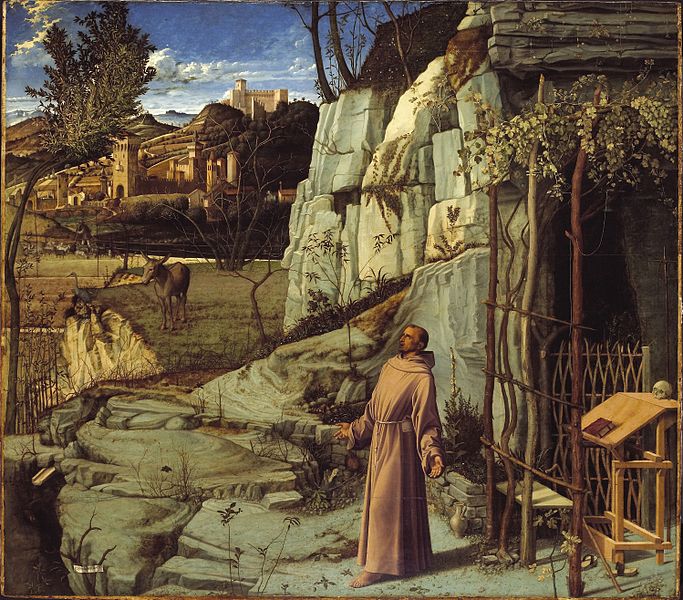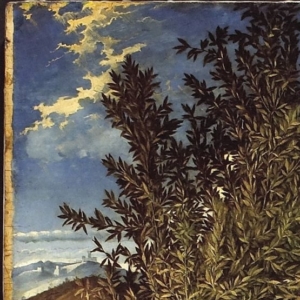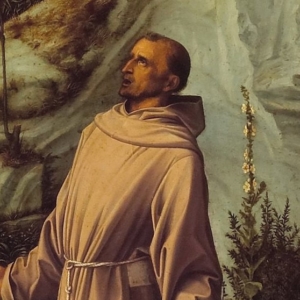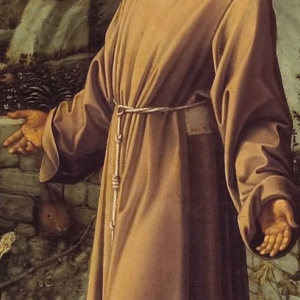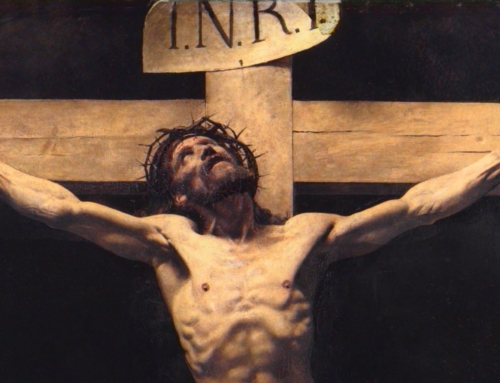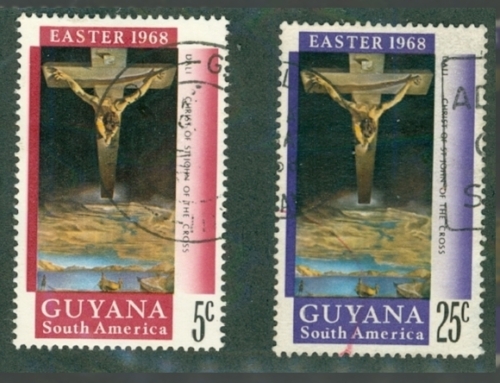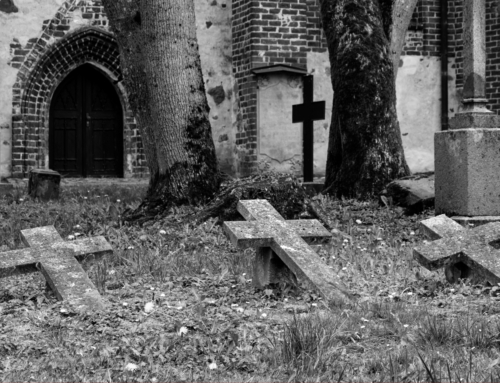Editor’s note: This is an introduction to our new series, Beholding True Beauty, which will consist of prayerful reflections on works of sacred art. In a culture saturated with superficially attractive and distracting images, turning to truly beautiful art can heal the agitation of the mind and draw its gaze towards the Source of all beauty. The series will run on Tuesdays and Thursdays throughout the month of October. Read the whole series here.
“The animals show how much he loved nature.”
“Yes, you can see how the artist interweaves Francis’ work with the natural landscape.”
“St. Francis is my favorite saint.”
“But you’re not even Catholic.”
“I know, but I just love animals.”
Like myself, these interlocutors next to me stood captivated by Bellini’s painting of St. Francis housed in the Frick Collection in New York City. We, however, saw very different things. My college-aged art amateurs focused on the natural setting, as if on a closed composition. To their eyes, it seemed that Francis had just stepped out into the glorious sunshine of a beautiful day ready to play with Sister Rabbit and Brother Donkey.
But St. Francis is not focused on sunshine or the surrounding critters. Francis is not stretching himself after a particularly pleasant catnap involving delightful dreams of lamb and wolf frolicking amidst a field of daisies.
Look closer at the light in the top left hand corner and at St. Francis’ features as he gazes up into it.
What Francis gazes at, heralded by the light that so subtly bursts in, comes not from this world.
The subtlety of Bellini’s depiction excuses the ignorance my neighbors at the art gallery. Many paintings of the Ecstasy of St. Francis include the mysterious tell-tale Seraph-enshrouded crucified Christ (cf. Giotto’s and Veneziano’s).
Bellini, however, chose not to picture the vision. Rather, we see St. Francis’ reaction to what is beyond our scope of vision. In this depiction of St. Francis, we glimpse the perfection of our Christian life.
God made man to share his life. To draw us into his own intimate life, God “shared our human nature in all things but sin” (Fourth Eucharistic Prayer). Our Lord descended, suffered, and died, not only to share our life, but so that we might share his, becoming “partakers of the divine nature” (2 Pet 1:4). To come to that divine union, that intimate friendship, that sharing in the life of the Trinity, we must tread the same graced path our Savior trod, joyously following the bridge of the Cross.
Francis eagerly embraced the Cross as that means of union with Our Lord. In his biography of the founder, St. Bonaventure recounts two visions Francis had of Christ crucified, which form a sort of inclusio for his life. Shortly after his conversion, Francis beheld Christ fastened to the tree. Gazing upon his savior, “his soul was melted within him.” The vision of Christ’s Passion so deeply emblazoned itself on his heart that “whensoever he recalled the Crucifixion of Christ, he could scarce refrain from tears and from groaning aloud.”
For all his life as a poor friar, Francis held before the eyes of his heart the unspeakable outpouring of God’s love upon the Cross. As he neared his death, Francis received the marks of that love upon his own body. Two years before his death, Francis retired to a cave in the mountain of Alverna for a period of prayer and fasting. Rapt in prayer, Francis saw his second vision of the Crucified One, depicted here in Bellini’s painting. Off-canvas Francis’ astonished gaze beholds Christ enfolded in the shape of a Seraphim, a burning one.
In this vision, Our Lord revealed how Francis would fully embrace the Cross. As St. Bonaventure recounts, “He was to be wholly transformed into the likeness of Christ Crucified, not by martyrdom of body, but by enkindling of heart.” Though he would not share in a death like Christ’s, Francis would share in a heart like his. Like the Seraphim who abide closest to God, burning most intensely from the interior fire of divine charity, Francis’ perfection consisted in having his heart transformed into the likeness of Christ’s crucified heart.
As a special grace, Our Lord allowed Francis’ unity in heart with the Crucified One to manifest itself in his flesh. With great subtleness again, Bellini depicts the reception of the stigmata. Francis’ outstretched arms bear the marks of nails.
We don’t see Christ in this painting. Rather, we see what it means for our nature already to begin to share in the divine life here on earth. We see one aflame with the fiery charity that leads through the Cross to eternal joy.
Holy Father Francis, Pray for us.
✠
Image: Giovanni Bellini, St. Francis in Ecstasy

